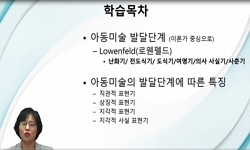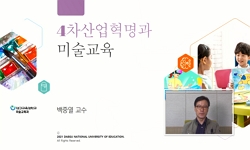Since ‘Ingenious Talents’ with integrated thinking abilities are now widely expected by people, STEAM(Science, Technology, Engineering, Art, Mathematics) education is emphasized in modern society in order to develop emotion and creativity beyond s...
http://chineseinput.net/에서 pinyin(병음)방식으로 중국어를 변환할 수 있습니다.
변환된 중국어를 복사하여 사용하시면 됩니다.
- 中文 을 입력하시려면 zhongwen을 입력하시고 space를누르시면됩니다.
- 北京 을 입력하시려면 beijing을 입력하시고 space를 누르시면 됩니다.
키네틱아트와 과학탐구활동을 활용한 융합인재교육(STEAM) 기반의 미술수업 지도방안 연구 = (A) study on STEAM based education art lesson plans using kinetic art and science inquiry activities
한글로보기https://www.riss.kr/link?id=T13553338
- 저자
-
발행사항
부산 : 부산대학교 교육대학원, 2014
-
학위논문사항
학위논문(석사) -- 부산대학교 교육대학원 , 미술교육전공 , 2014. 8
-
발행연도
2014
-
작성언어
한국어
- 주제어
-
DDC
707 판사항(23)
-
발행국(도시)
부산
-
형태사항
101 장 : 삽화 ; 26 cm
-
일반주기명
지도교수:손원준
참고문헌: 장 88-90 - DOI식별코드
- 소장기관
-
0
상세조회 -
0
다운로드
부가정보
다국어 초록 (Multilingual Abstract)
Since ‘Ingenious Talents’ with integrated thinking abilities are now widely expected by people, STEAM(Science, Technology, Engineering, Art, Mathematics) education is emphasized in modern society in order to develop emotion and creativity beyond skills and knowledge. STEAM education refers to the fields of Science, Technology, Engineering, Art and Mathematics, of which the goals are to foster Ingenious Talents. To ensure that Science and Art, from the STEAM elements, are not merely combined superficially, nor that Art plays an instrumental role in Science education, this paper presented a teaching plan based on middle school science textbooks and Kinetic Artworks: science inquiry activities which makes full use of visual senses and Kinetic Art, which has a lot to do with Science in particular, on the basis of the importance of STEAM and the value of Art education. Through research, we developed a class of which the result of science experiment itself becomes an artwork which can be observed and appreciated simultaneously, and applied it to middle school students. As a result of the mixture of scientific inquiry activities and Kinetic Art, positive evaluation was made from the students that their creativity, interest in Science·Art and teamwork have improved through making Kinetic Art works. It can be said that students have fulfilled the implementation of creative ideas through activities motivating convergent thinking of scientific phenomena and aesthetic expression. Also, the twist to the teaching method has been an effective means to draw students’ attention. Through group activities, students have improved in accepting opinions and convincing other students. In the long term, expecting students’ convergent thinking to be improved and students to grow into Ingenious Talents, we hope that the teaching plans in this study are developed in various forms and STEAM education to be actively studied.
목차 (Table of Contents)
- I. 서론 1
- 1. 연구의 필요성 및 목적 1
- 2. 연구의 내용 및 방법 4
- 3. 연구의 제한점 5
- 4. 용어의 정리 6
- I. 서론 1
- 1. 연구의 필요성 및 목적 1
- 2. 연구의 내용 및 방법 4
- 3. 연구의 제한점 5
- 4. 용어의 정리 6
- II. 이론적 배경 8
- 1. 융합인재교육(STEAM) 8
- 가. 융합인재교육(STEAM)개념 및 정의 8
- 나. STEAM 기반의 학습 모형: 수업모형 12
- 다. 융합인재교육(STEAM)의 필요성 14
- 라. 융합인재교육(STEAM)에서 미술 16
- 2. 키네틱아트 18
- 가. 키네틱아트의 개념과 정의 18
- 나. 키네틱아트에서 나타나는 요소의 특징 19
- 다. 키네틱아트의 미술 교육적 가치 20
- III. 수업지도 방안 개발 및 적용 22
- 1. 수업지도 방향 및 개발 22
- 가. 키네틱아트와 과학탐구활동을 활용한 융합인재교육(STEAM) 수업지도방안 22
- 2. 수업의 실제 38
- 가. 과학탐구활동을 활용한 키네틱아트 작품 만들기 - ‘모세관현상, 기화’활용 38
- 나. 수업의 결과 및 분석 62
- IV. 결론 및 제언 81
- 참고문헌 88
- ABSTRACT 100











